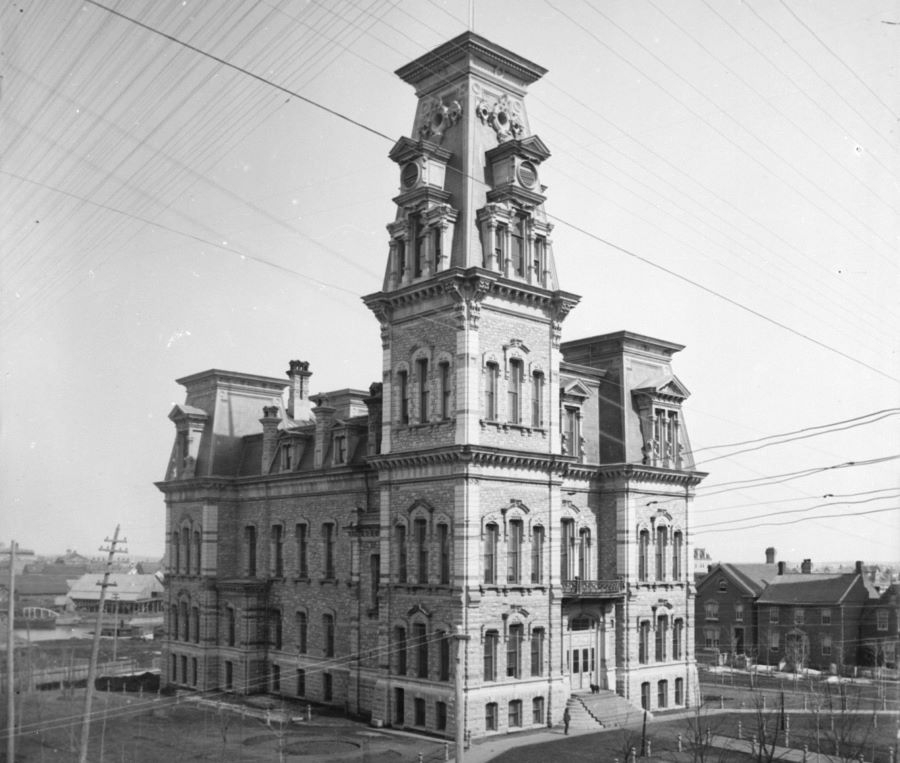By: David Ducharme
A lot can be learned about a city and its inhabitants—its history, character, evolution—by perusing its bylaws. Yep, I said bylaws. While not exactly your high literature full of colorful prose, City of Ottawa archivist Louise Roy-Brochu thinks bylaws are pretty darn good reading.
"I always enjoy reading the bylaws," she says. "They're so interesting." At first, that may sound like an odd statement. Has she been locked in the archives vault too long? But on further probing, it's evident that she's got something. In Ms. Roy-Brochu's words: "(The bylaws) are the greatest component and reflection of the city's social development. The bylaws are a wonderful example of the evolution of urbanization." I once read of a professor of anthropology who would take his students on "digs" to municipal dumps. Each layer of debris in the dump identified a different era. Garbage is so well preserved that one student found a hot dog wiener from the 1950s—still appearing almost edible. Discarded newspapers were like rings on a tree—they allowed the students to easily identify the era of the layer. So, in that sense, city bylaws are a lot like garbage—they can reveal a lot about civilization and, to many people, they stink too. Political Science 101 reveals that municipal governments are merely statutory authorities and not constitutional bodies such as the federal and provincial governments.
Under the British North America Act (and subsequently the Constitution Act), Section 92-8 gives to the provincial legislatures the power over municipal institutions. The standard interpretation of the BNA Act is that local governments are the "creatures" of the province. The current bulldozing by the Harris government in Ontario is evidence of that.
Financially, local governments must rely on the provinces for transfer payments and areas of taxation that the province allows them. According to Ms. Roy-Brochu, there is a common thread when reading through the City of Ottawa bylaws from 1850 to the pre-sent. "Taxes, taxes, taxes," she says. Bylaws generate much-needed revenue for the lower tier governments. From 1850 to 1996, City of Ottawa legislators passed 226,527 bylaws. The purpose of bylaws was and still is for local improvements, such as street maintenance. But they also reflect, as Ms. Roy-Brochu states, the social development of the people. And, of course, because most bylaws either have a levy attached to them, or a fine, they are also revenue generating. As an example of the social development reflected in bylaws—take the recent bylaw passed by council regarding toplessness of women in the city. Now there's a bylaw you're just not going to find in the 1850s or 1950s.
Or last year's bylaw on lap dancing. Nope. That's definitely indicative of the spirit of the 1990s. What you will find in the 1850s, how-ever, are bylaws more reflective of that time period. The very first bylaw passed for Bytown in 1850 was "to establish Rules of Order" (enacted March 11, 1850). Bylaw #4 is more telling: "To prevent swine, horses and cattle running at large." Perhaps similar to the ban on touching dancers, but not quite the same thing. Bylaws that first year were already being appealed. Bylaw #11 regulated "Beer Houses," while bylaw #26 repealed it "to provide for licensing and regulating of Beer Houses." Looking back at bylaws can also reveal a foreshadowing—planning by councils for down the road.
In 1947, for instance, council passed a bylaw "to authorize the Ottawa Electric Railway Company to lay down and maintain single track spurs on Sussex and John Street." To Ms. Roy-Brochu, this was the first step toward the building of a new city hall — which was realized 11 years later, in 1947. Some bylaws, on paper, make you shake your head, simply appearing to be common sense.
For instance, did you know that you can't walk out onto a football field while a game is on? Duh. I'd like to know what initiated that bylaw, which falls under the category of "nuisance." The fine for walking, or streaking (hmm, maybe there's the answer) out onto the field (it was passed before the demise of the Canadian Football League's Ottawa Rough Riders) is a maximum of $5,000. This column plans to explore some of the more, well, interesting, if not downright ridiculous, bylaws passed by municipal members. Sometimes quirky, sometimes funny, it will also have a serious side which I hope will offer some reflection of an evolving city — Ottawa.
Photo: Ottawa, Ontario's second city hall was built in 1877 on Elgin Street between Queen and Albert Streets. It was destroyed by fire in 1931

